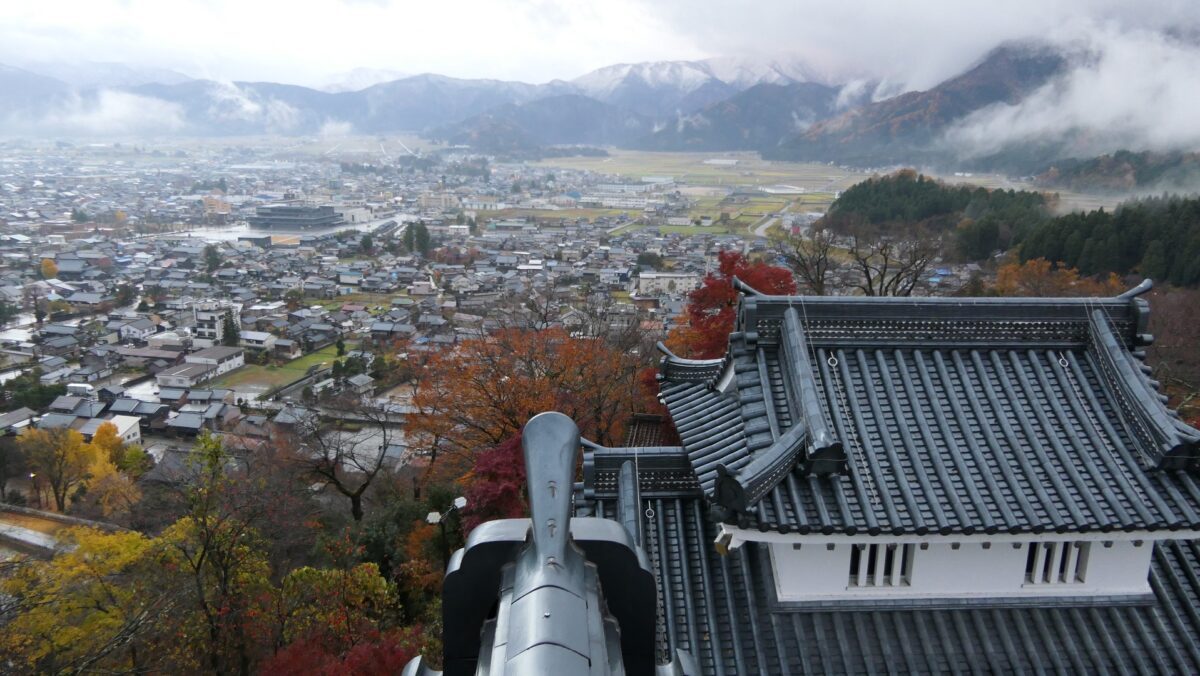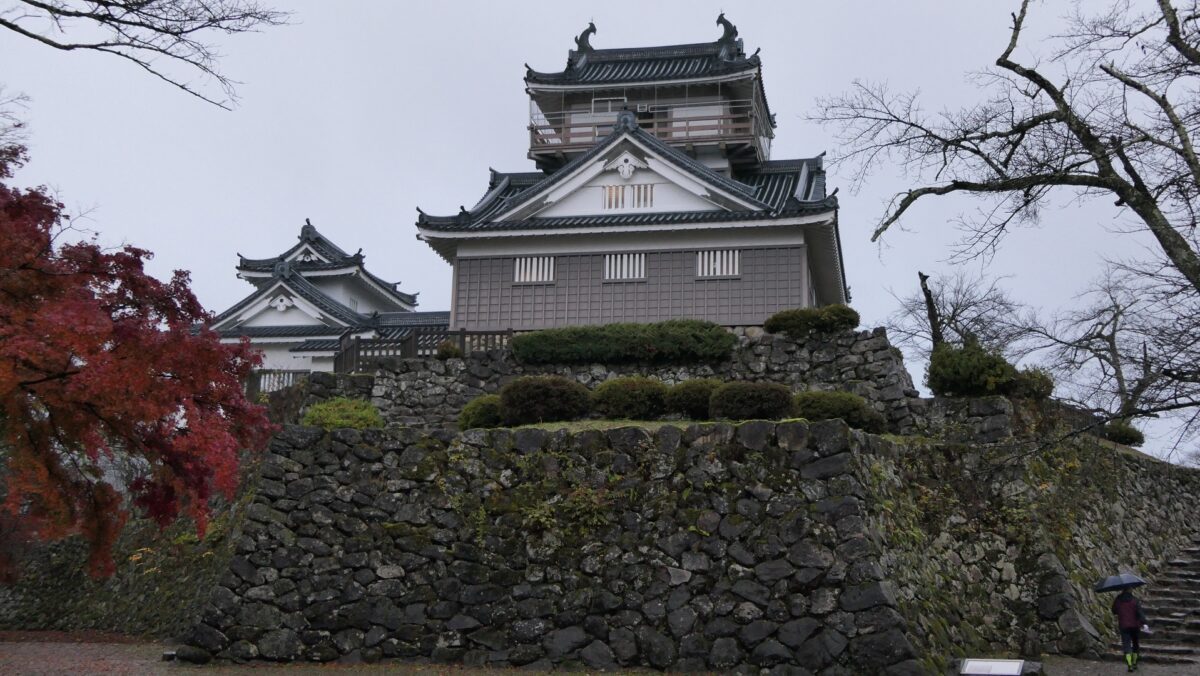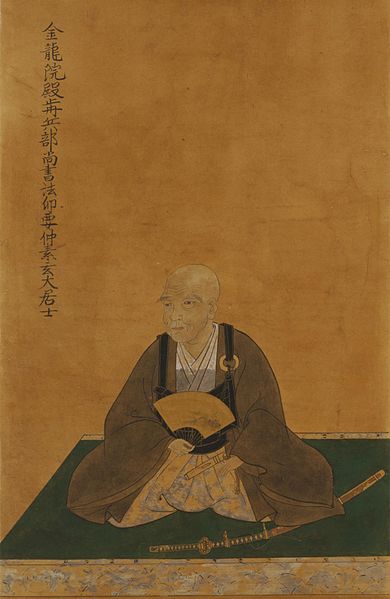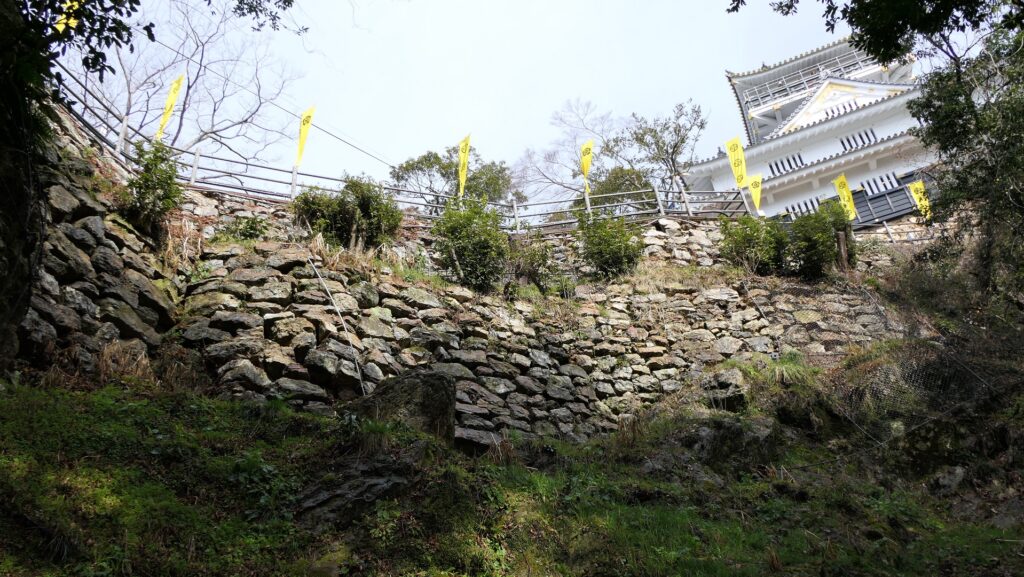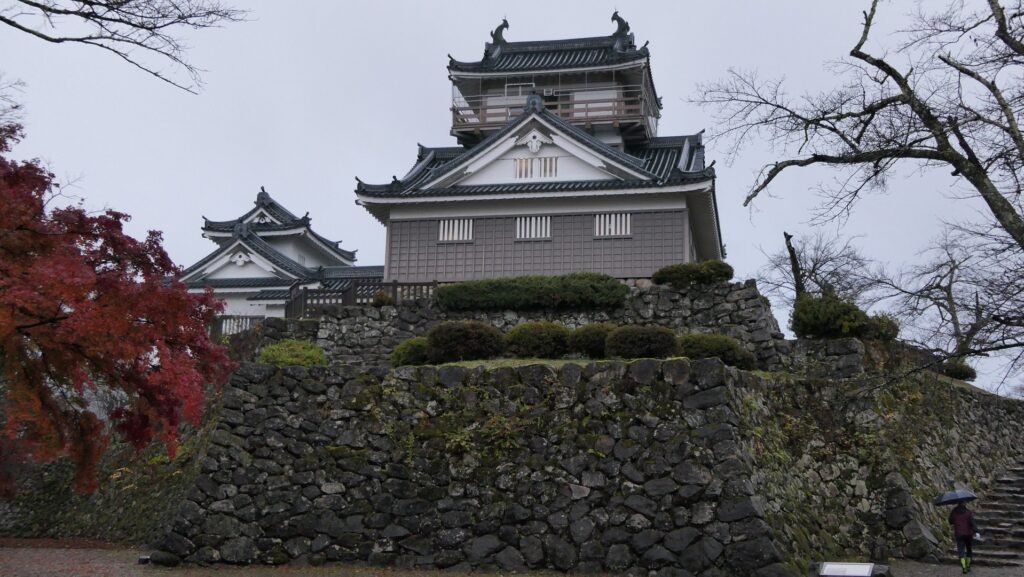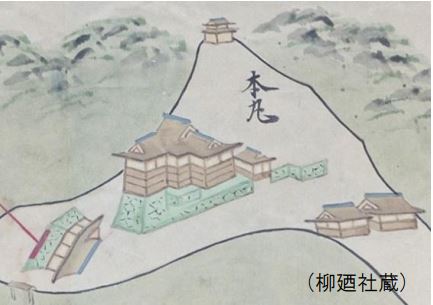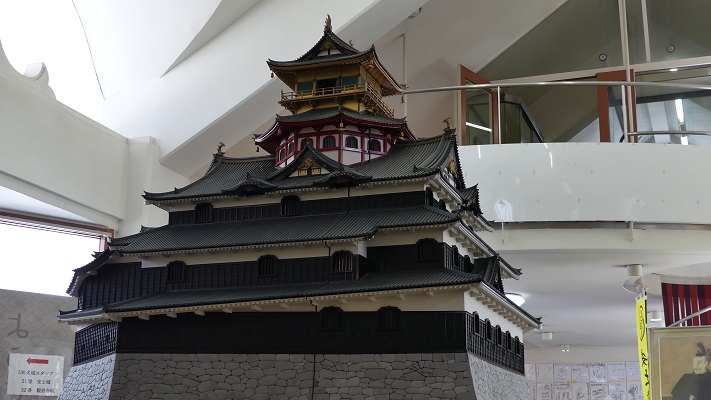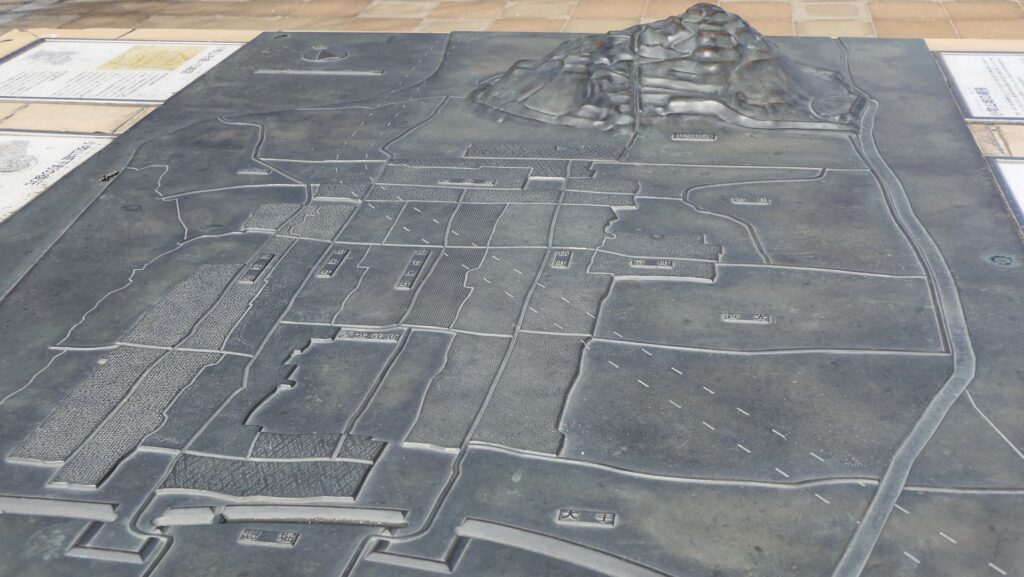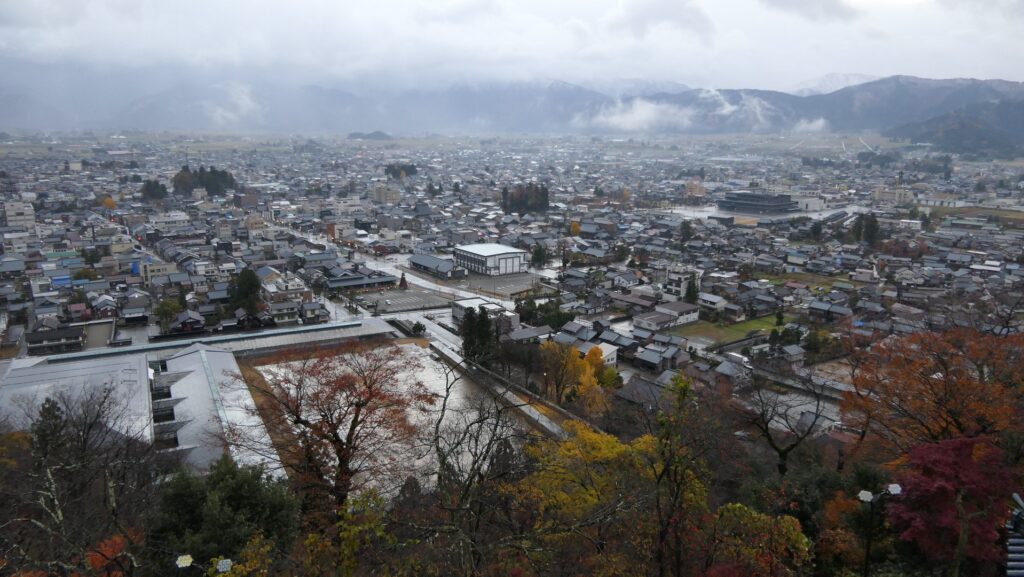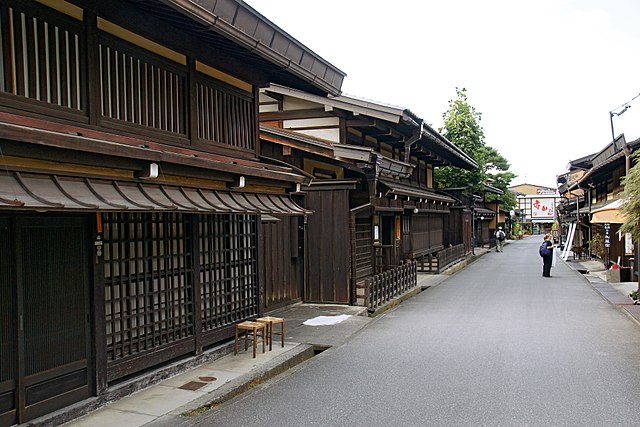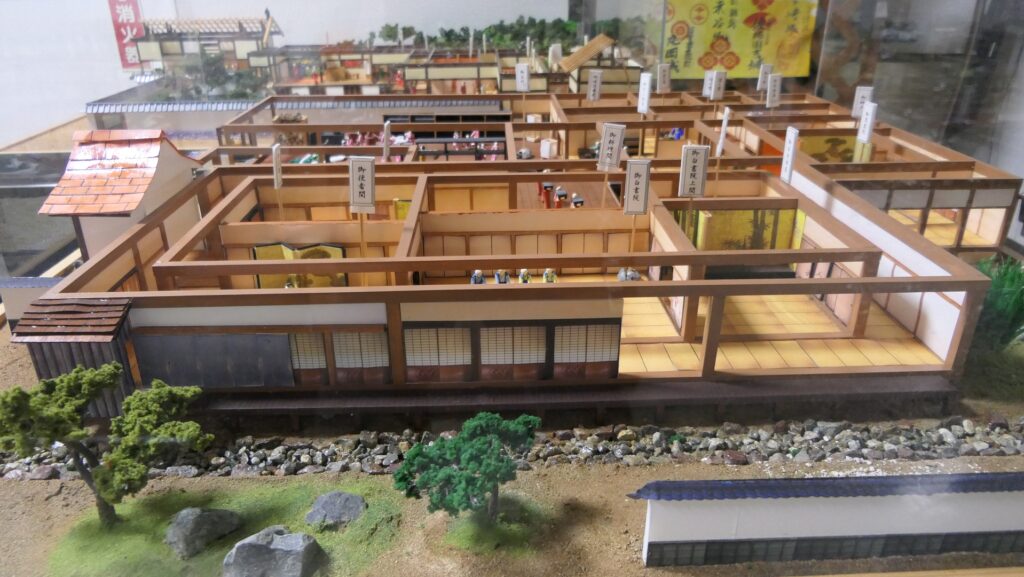Features
Four Trails to Top
Today, Echizen-Ohno Castle is part of Kameyama Park on the mountain. There are four trails to the top of the mountain. Only one of the four routes called Hyakken-zaka is the original one which is zigzagged and steep.
The map around the castle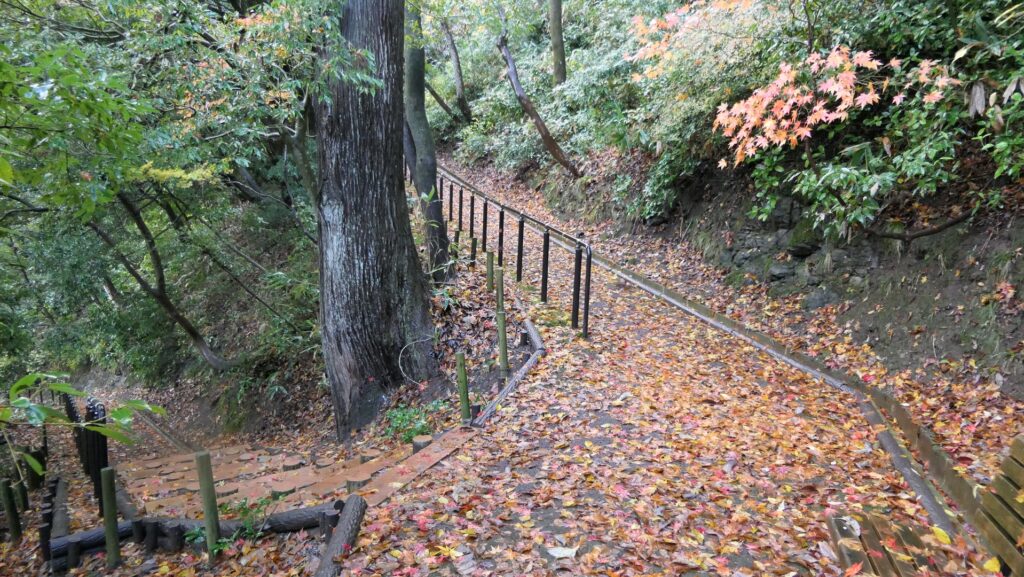
If you want to walk on a gentle slope, you can use other routes such as the Southern Route. The walk takes about 15 to 20 minutes. If you choose the Southern Route and climb up stone steps after the walk, you will arrive at the Main Enclosure on the top.
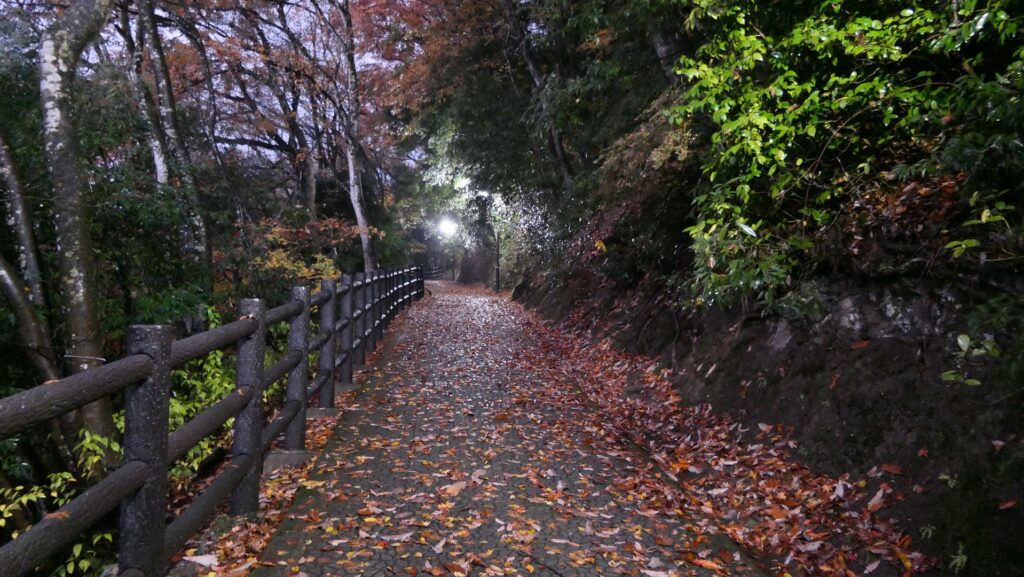
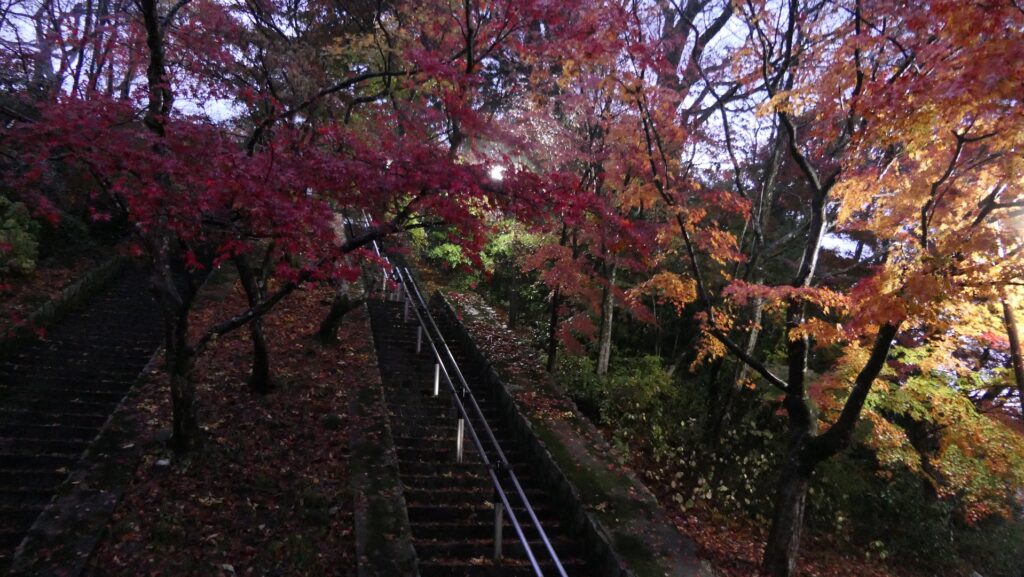
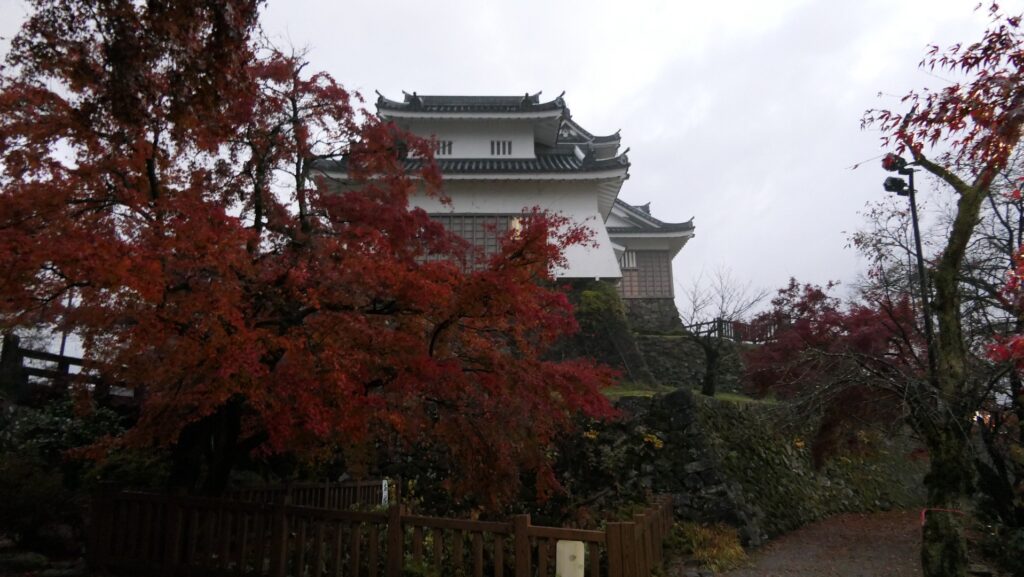
Old Stone Walls and Rebuilt Main Tower
The enclosure is surrounded entirely by the old stone walls which Nagachika Kanamori originally built. These stone walls were piled up using natural stones in an old way called Nozura-zumi. They look wild but were built wisely. Part of them seemed to have been re-piled when the castle buildings were rebuilt in the present time.
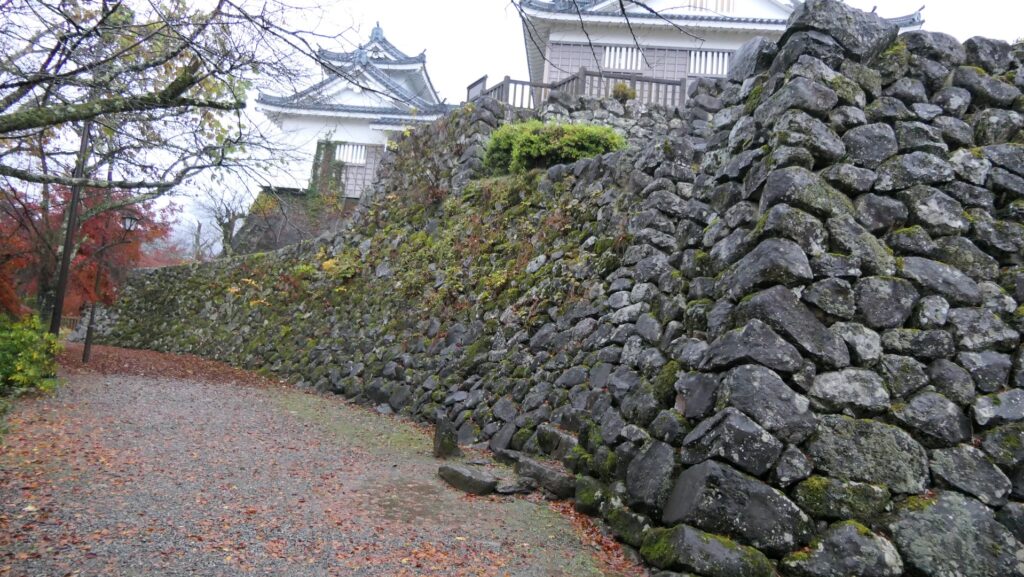
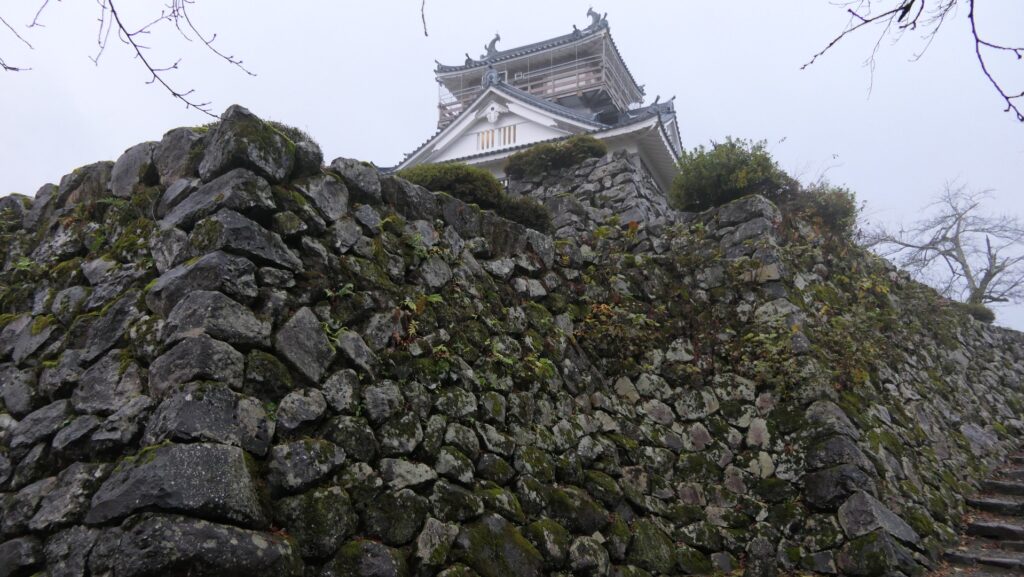
What you see on the stone walls is the rebuilt Tenshu which was constructed in 1968. It doesn’t resemble the original Tenshu of Echizen-Ohno Castle which looked like combined halls. It looks like a typical Main Tower which people in Japan usually imagine as Tenshu. The reason why such a Tenshu was built was probably because people in this area wanted it. The Tenshu building is actually a modern building which is also used as a historical museum and an observation platform. You can learn more about the castle inside.
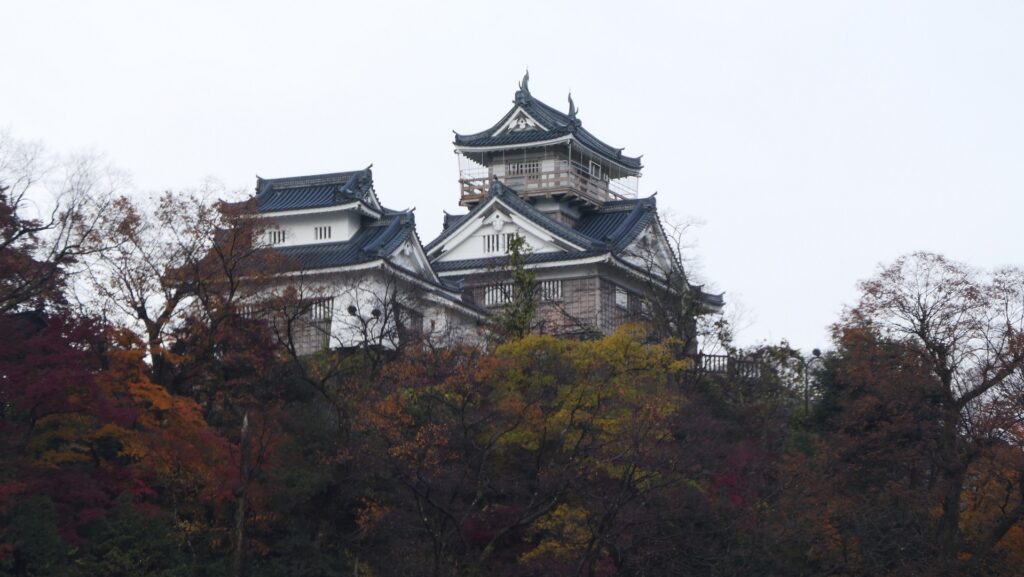
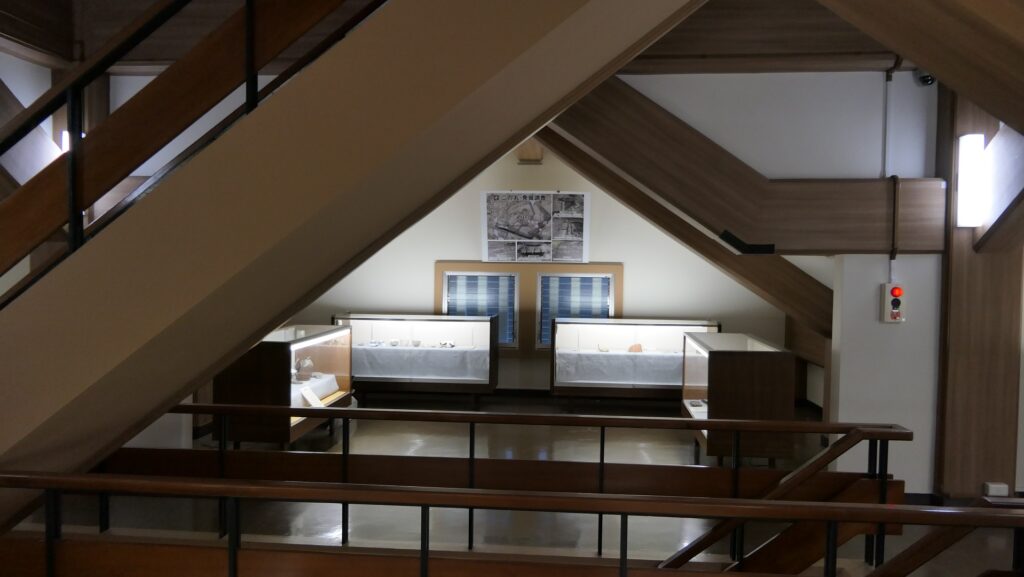
From the top floor, you can enjoy a great view of Ohno city area including the old castle town and Inuyama Mountain where the old castle before Echizen-Ohno Castle was built.
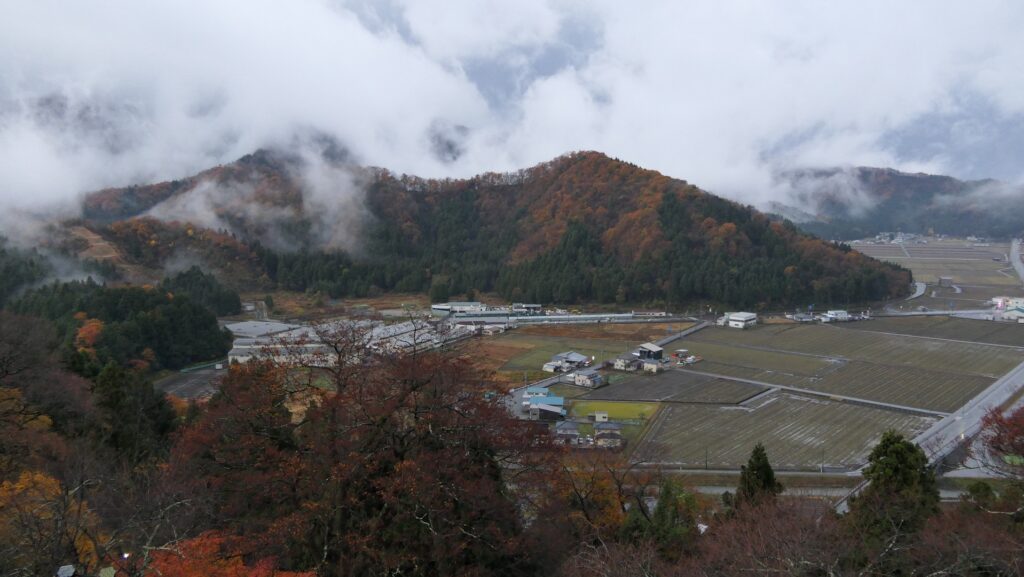
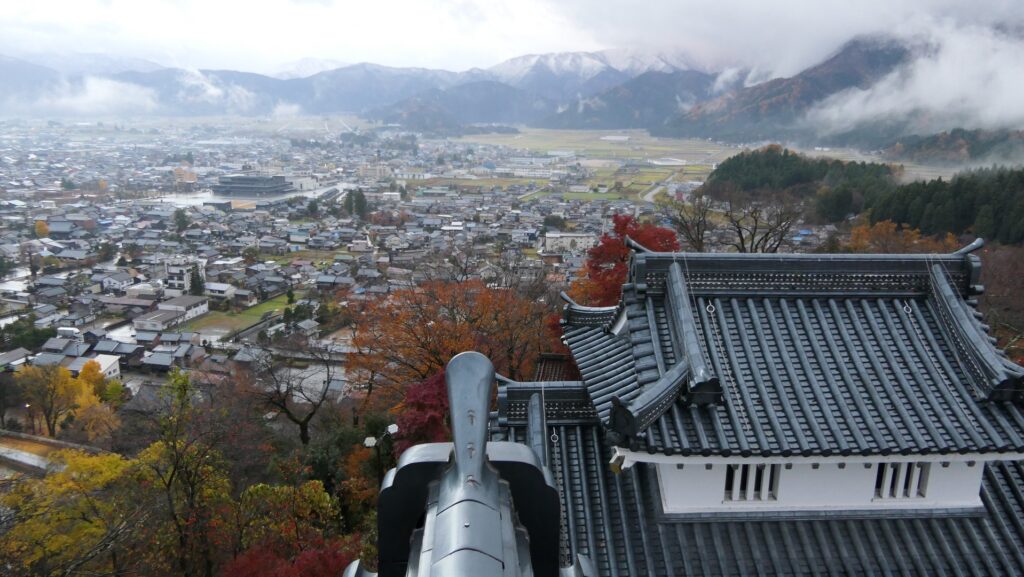
Attractions at Foot of Mountain
You can also visit other attractions of the castle at the foot of the mountain. There is an educational complex in the Second Enclosure now called Meirin. The facilities include a primary school and a community center. The short part of the water moat remains in front of the facility.
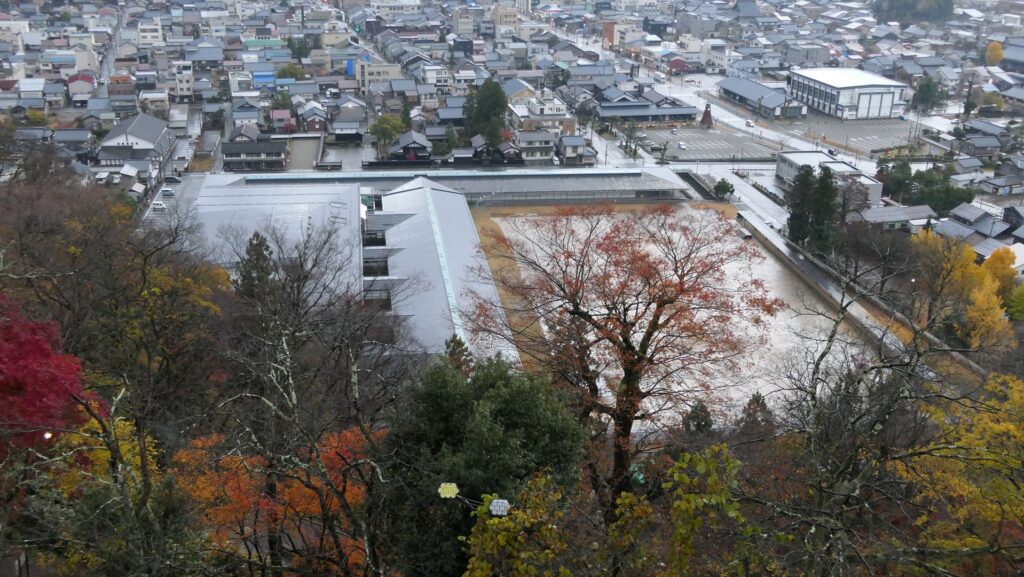
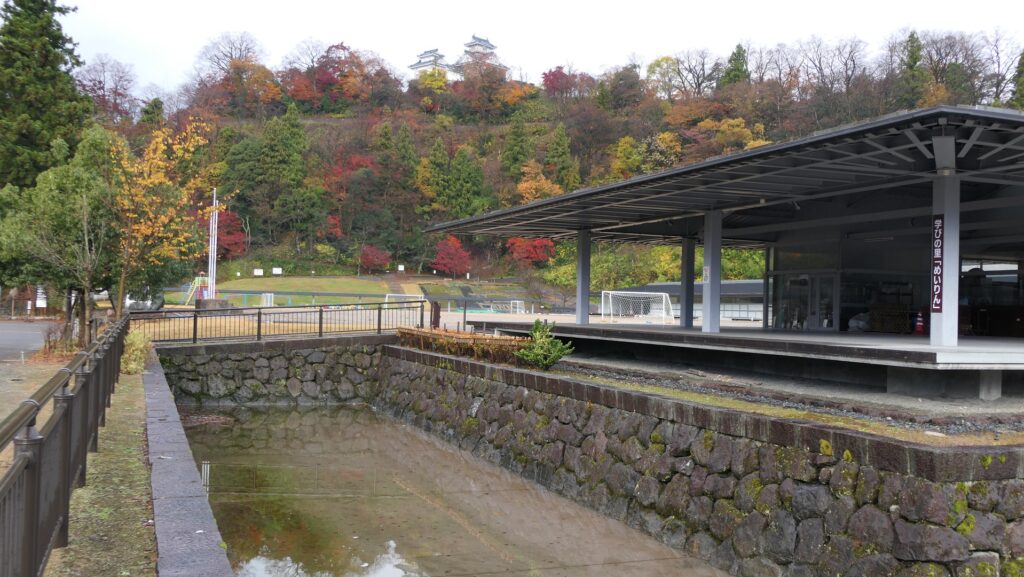
There is the restored house of the Uchiyama Clan, a senior vassal family of the Ohno Domain. There is also the remaining warrior’s house of the Tamura Clan around.
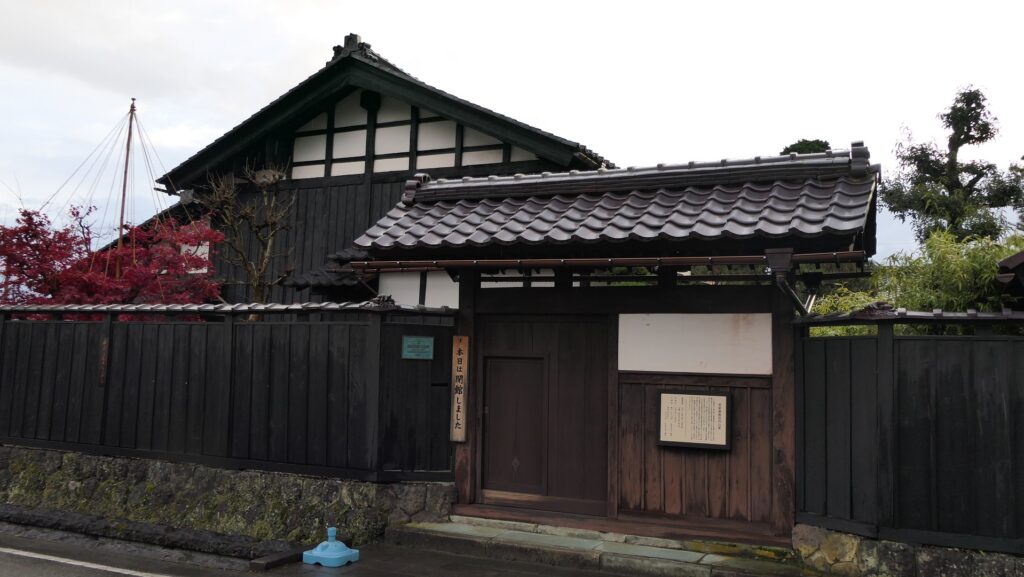

Attractive Castle Town
If you have time, I recommend walking around the old castle town. For example, the morning market is held every day excluding midwinter at the Shichiken Street in the merchant area. A famous spring spot called Oshouzu is near the temple area. It was used by the lord of the castle. There are a lot of springs in this town, which have been used for domestic water since the town was developed.
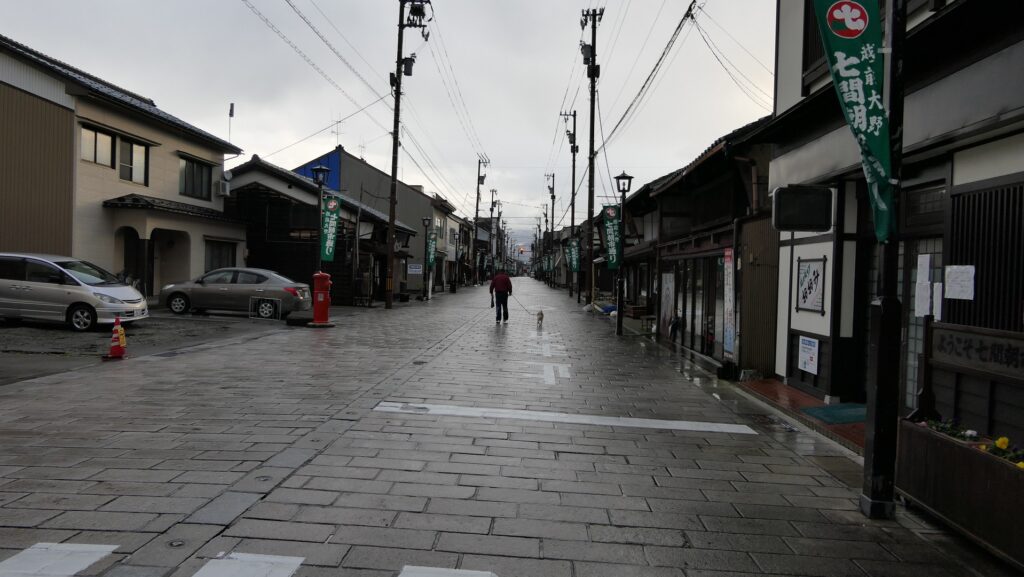
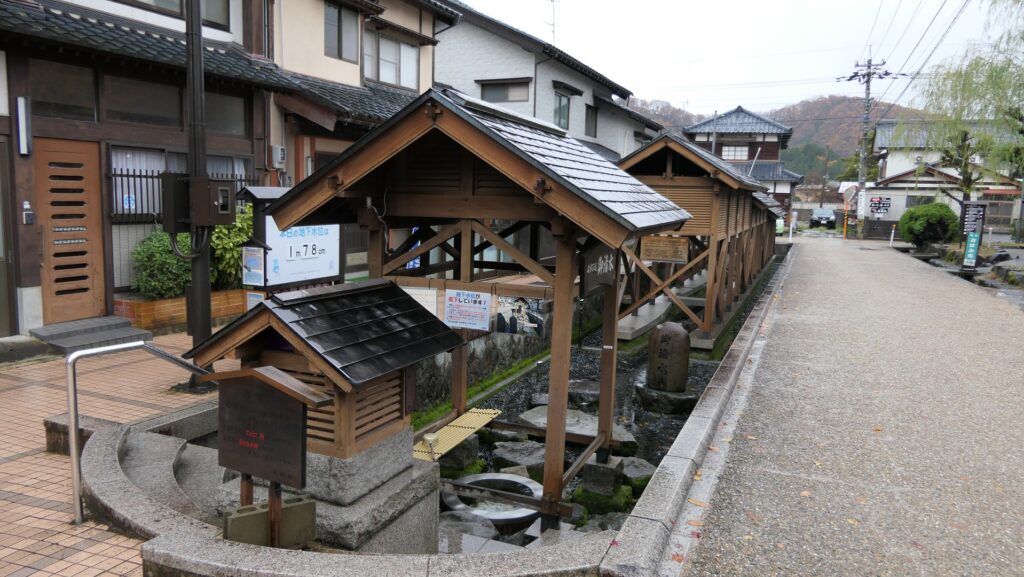
You can also see zigzagged streets at several points, which were made to prevent enemies from attacking the castle easily.
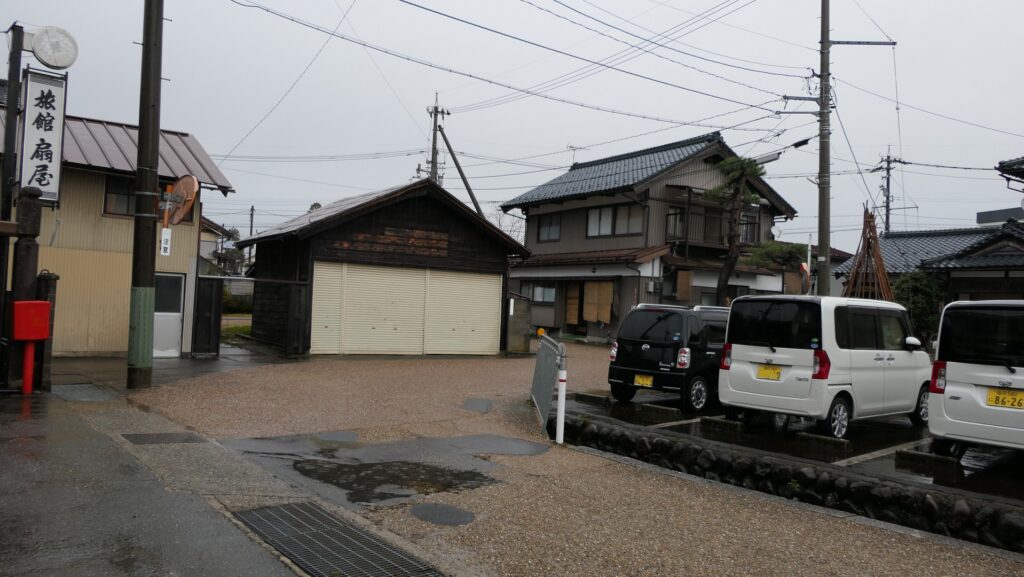
To be continued in “Echizen-Ohno Castle Part3”
Back to “Echizen-Ohno Castle Part1”

